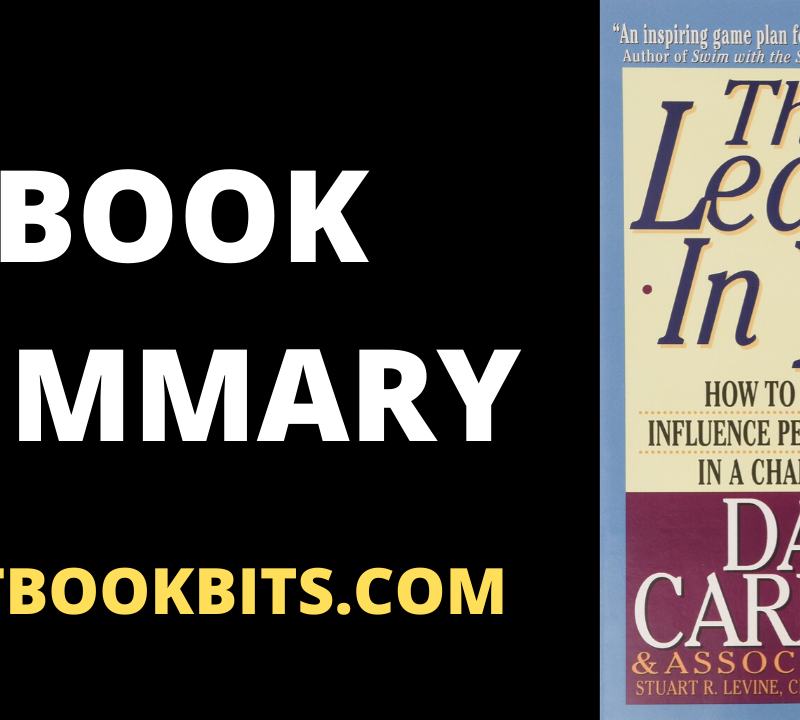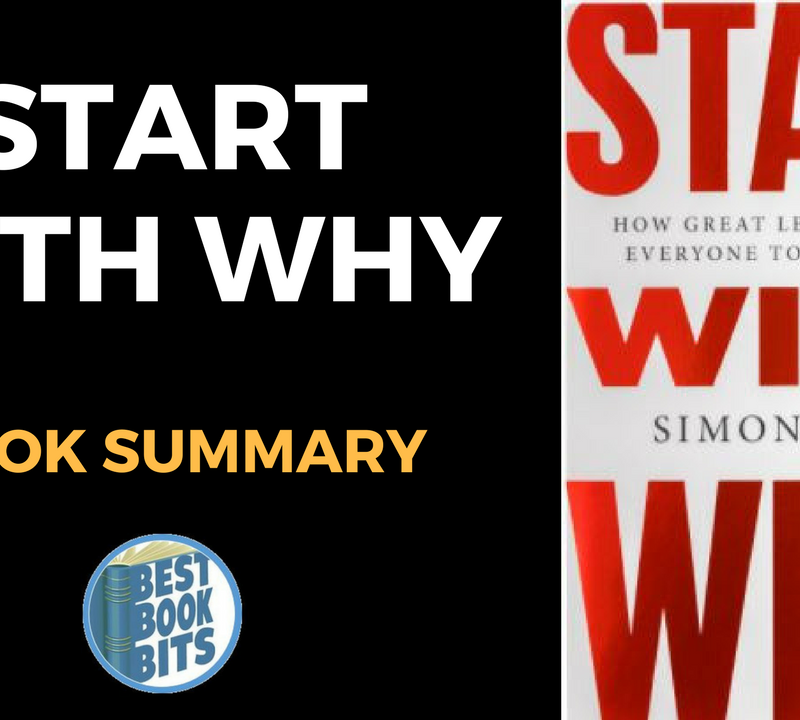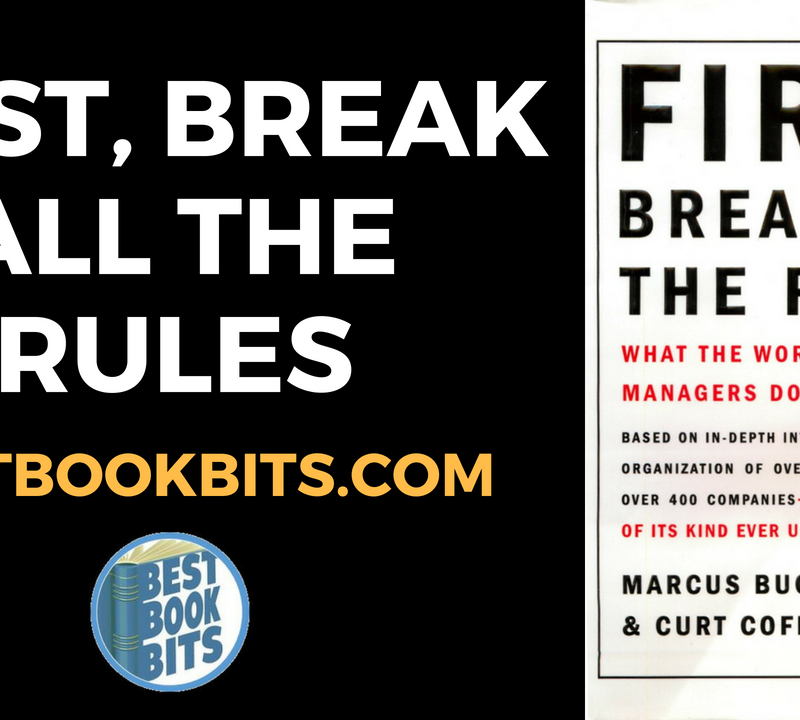♣ CLICK THIS TO STOP TRYING TO ACHIEVE YOUR GOALS BY YOURSELF AND BE COACHED TODAY HERE
♥ CLICK THIS TO DOWNLOAD THIS FREE PDF SUMMARY HERE
♦ CLICK THESE FOR THE FOLLOWING Book | Summaries | Course
YouTube |Spotify | Instagram | Facebook | Newsletter | Website
Dare to Lead by Brené Brown
Brave Leaders & Courage Cultures
What is a leader? According to Brené Brown, a leader is:
“Anyone who takes responsibility for finding the potential in people and processes, and who has the courage to develop that potential.”
In her two-decade long research, she has found that we need braver leaders and more courageous cultures for modern organisations to flourish and innovate.
What does it take to become a daring leader and build a culture of courage within an organisation? This is the main question that Brené Brown addresses in her book Dare To Lead.
Courage is a collection of 4 skill sets that can be taught, observed, and measured:
- Rumbling with vulnerability
- Living into our values
- Braving trust
- Learning to rise
In the following chapters, we’ll break down all of them. We can all become daring leaders. Ready to find out how?
- RUMBLING WITH VULNERABILITY
‘Rumbling with vulnerability’ is the heart of daring leadership. A “rumble” is a conversation where people show up vulnerable and serve the mission and each other – not their egos. Being vulnerable is the emotion we experience during times of uncertainty, failure, risk, and emotional exposure. If we are brave enough often enough, we will fail and be criticised often. The author encourages everyone to face moments of vulnerability with a whole heart and no armor.
There are 6 myths related to vulnerability:
- Vulnerability is weakness
- “I don’t do vulnerability”
- “I can go it alone”
- You can engineer the uncertainty and discomfort out of vulnerability
- Trust comes before vulnerability
- Vulnerability is disclosure
The truth couldn’t be any further:
- Daring leadership is born through vulnerability
- Without vulnerability there is no creativity or innovation
- Vulnerability means empathy and connection with other people
- You have to face vulnerability to learn
- Trust and vulnerability grow co-dependently, not separately
- Vulnerability minus boundaries is confession & manipulation
Let’s learn how to rumble with vulnerability.
The Call To Courage
Joseph Campbell offers the purest calls to courage for leaders:
“The cave you fear to enter holds the treasure you seek.”
Your journey towards a more courageous leader starts by defining the “treasure” and acknowledging the fears that get in the way:“I want less anxiety, less feeling alone, more work toward exciting goals.” (Treasure)
“However, I’m afraid to admit that I don’t always have the answers or skills that “real leaders” have, I’m scared of making bad decisions, and I’ve felt stuck and scared, tired and lonely, a lot lately.”
It’s ok. I feel you ?
The only way forward, according to the author’s research, is by investing time attending to fears and feelings (entering the cave). But first, we need to shed our armour and stay open-hearted.
The Armoury
Leaders believe that, by protecting our heart & emotions and not bringing them to work, employees become more productive and efficient. The reality is: our armour kills courage, curiosity, and innovation.
Here are some armoured leadership examples, and how to turn them around:
- Driving Perfectionism & Fostering Fear of Failure. A daring leader encourages healthy striving, empathy and understanding, and self-compassion in times of failure.
- Squandering Opportunities for Joy and Recognition. Joy is the most vulnerable emotion we feel. A daring leader practices gratitude and celebrates milestones & victories.
- Being a Knower & Being Right. Becoming a learner and make learning curiosity skills a priority is the way towards daring leadership.
- Using Criticism as Self-Protection. The remedy is building a culture of contribution – you can’t criticise unless you then offer a stronger solution.
- Leading for Compliance & Control. Daring leaders cultivate commitment and share purpose, priorities, and mission.
- Rewarding Exhaustion as a Status Symbol & Attaching Productivity to Self-Worth. Daring leaders are intentional about promoting sleep, play, and recovery.
- Tolerating Discrimination, Echo Chambers, and a “Fitting-in” Culture. Daring leaders cultivate a culture of belonging, inclusivity, and diversity, acknowledging their own privilege and staying open to learning about their biases and blind spots.
- Leading from Hurt. Attending to fears and feelings is the only way to lead from heart.
♣ CLICK THIS TO STOP TRYING TO ACHIEVE YOUR GOALS BY YOURSELF AND BE COACHED TODAY HERE
♥ CLICK THIS TO DOWNLOAD THIS FREE PDF SUMMARY HERE
♦ CLICK THESE FOR THE FOLLOWING Book | Summaries | Course
YouTube |Spotify | Instagram | Facebook | Newsletter | Website
Shame & Empathy
Leaders feel scared to be vulnerable because, once they take off their armour and expose themselves, they get to experience shame.
Shame is the fear that something we’ve done or failed to do makes us unworthy of connection, belonging, or even love. Shame make us say two things: 1) “Never good enough.” 2) “Who do you think you are?”
What we need to acknowledge about shame is:
- We all have it – it’s one of the most primitive human emotions.
- We’re all afraid to talk about shame.
- The less we talk about shame, the more control it has over our lives At work, shame shows up through behavioural cues, such as perfectionism, gossiping, comparison, harassment, discrimination, blaming, and bullying.
Shame happens between people, so we can only heal shame through empathy.
There are 5 elements to empathy:
- To see the world as others see it, or perspective taking
- To be nonjudgmental
- To understand another person’s feelings
- To communicate your understanding of that person’s feelings
- To be mindful and not over-identify with our thoughts and feelings
Respectively, there are 6 ways we tend to miss a moment of empathy:
- Sympathy vs. Empathy (“Oh, it’s bad, that looks terrible. So sorry.”)
- The Gasp & Awe (“Oh gosh, if that happened to me, I’d die.”)
- The Mighty Fall (“I just never expected such a bad rating from you.”)
- The Boots & Shovel (“It’s not that bad… You know you’re amazing.”)
- If You Think That’s Bad… (“That’s nothing. Let me tell you about my…”)
- The Block & Tackle (“How did you let this happen? What were you thinking?”)
The good news is, we can all learn how to practice empathy. When you think about those 6 types of empathy misses, are there one or two that shut you down? How do they affect your connection with the person? On the flip side, how do you rate your own empathy skill? Are there one or two responses that you typically use that you need to change?
These 2 sets of questions are a good start. The trickiest barrier to empathy is resisting the urge to punish or shame our own selves when we make mistakes. In other words, we need to master self-compassion – talking to yourselves the way we’d talk to someone we love.
Connecting with your own (or somebody else’s) feelings manifests in phrases like:
- Oh, man. I feel you.
- I know that feeling and it sucks.
- Me too.
- I see you. You’re not alone.
- I’ve been in a similar place and it’s really hard.
- I understand what that’s like.
- I think a lot of us experience that. Either we’re all normal or we’re all weird. Either way, it’s not just you.
Shame Resilience
We build empathy & shame resilience by:
- Recognizing Shame and Understanding Its Triggers. This way, we’re less likely to default to our shame shields, such as: Moving away (withdrawing, hiding, silencing ourselves, keeping secrets),b. Moving toward (seeking to appease and please), or c. Moving against (trying to gain power over others by being aggressive, and by using shame to fight shame).
- Practicing Critical Awareness. When we see the big picture, we can be aware of shame triggers and social expectations that fuel shame.
- Reaching Out. Finding the courage to share our experiences and the compassion to hear others tell their stories, we force shame out.
- Speaking Shame. Shame derives its power from being unspeakable. That’s why it loves perfectionists – it’s natural for them to stay quiet.
Grounded Confidence
Grounded Confidence = Rumble Skills + Curiosity + Practice. During rumbling sessions, tough conversations, and emotionally charged decision-making, leaders with grounded confidence:
- Stay true to their values,
- Respond rather than react emotionally, and
- Operate from self-awareness, not self-protection.
Curiosity involves vulnerability, uncertainty, and courage. It is correlated with creativity, intelligence, improved learning and memory, and problem-solving.
Here’s how to start a curiosity-fueled conversation:
- The story I make up is…
- I’m curious about…
- Tell me more.
- I’m wondering…
- Help me understand…
- Tell me about your passion around this.
- Tell me why this doesn’t fit/work for you.
Finally, easy learning doesn’t build strong skills. Grounded confidence comes from the process of learning and unlearning, practicing and failing.
- LIVING INTO OUR VALUES
Usually, it’s our values & beliefs that lead us to do something uncomfortable and daring. However, unless we have clarity of values to remind ourselves why we’re out there daring, cynics and critics will bring us down. “Living into our values” means practising our values, not just believing them.
How?
Step 1 – Name. Pick the two values from the list on the next page that you hold most important. These 2 values are simply a definition of who you are in your life.
Step 2 – Behaviour. Armed with your 2 values, answer the following questions: What are 3 behaviors that support each value? What’s an example of a time when I was fully living into each value? What are 3 actions I’m tempted to do that are counter to each value?
Step 3 – Empathy. Daring leaders who live into their values are never silent about hard things. As Brené Brown says:
“Integrity is choosing courage over comfort.”
A brave leader is someone who says: “I see you. I hear you. I don’t have all the answers, but I’m going to keep listening and asking questions.”
Giving Feedback
As an essential last step to stay aligned with your values, keep in mind: “I know I’m ready to give feedback when I can…”
- Sit next to you rather than across from you.
- Put the problem in front of us rather than between us.
- Listen, ask questions, & accept that I may not fully understand the issue.
- Acknowledge what you do well vs. just pick apart your mistakes.
- Recognise your strengths and how you can best use them.
- Hold you accountable without shaming or blaming.
- Be open to owning my part.
- Genuinely thank you for your efforts vs. just criticise you for your failings.
- Talk about how these challenges will lead to growth and opportunity.
- Model the vulnerability and openness that I expect to see from you.
Receiving Feedback
Likewise, to best receive feedback, regardless of how it’s delivered, develop the following self-talk phrases:
- “I’m brave enough to listen.” (When receiving feedback from someone who lacks delivery skills.)
- “There’s something valuable here. Take what works and leave the rest.” (When receiving feedback from a skilled person, but we don’t know their intentions.)
- “This is the path to mastery.” (When receiving unscheduled feedback and being taken off guard.)
As the author highlights:
“The ultimate goal in receiving feedback is a skillful blend of listening, integrating feedback, and reflecting it back with accountability.”
- BRAVING TRUST
Trust is:
“Choosing to risk making something you value vulnerable to another person’s actions.”
Distrust is:
“What is important to me is not safe with this person in this situation (or any situation).”
Trust is built in small moments and holds teams and organisations together, but the slightest questioning of someone’s trustworthiness can lead to vulnerability lockdown.
The BRAVING Inventory
This practical rumble tool can help colleagues understand how much they trust each other and be specific about where the holes are.
- Boundaries: Respecting one’s boundaries and when you’re not clear about what’s okay and not okay, you ask.
- Reliability: You do what you say you’ll do. You don’t overpromise and are able to deliver on commitments.
- Accountability: You own your mistakes, apologise, and make amends.
- Vault: You don’t share information or experiences that are not yours to share or confidential.
- Integrity: You choose courage over comfort. You choose what is right over what is fun, fast, or easy.
- Non-judgment: We can talk about how we feel or ask each other for help without judgment.
- Generosity: You extend the most generous interpretation possible to the intentions, words, and actions of others.
How it works:
Each person fills out their BRAVING Inventory independently, then they meet one-on-one to discuss where their experiences align and where they differ. This tool brings more clarity than generally saying “I don’t trust you” .
Self-Trust
To use the BRAVING Inventory on yourself, ask the following questions:
- Did I respect my own boundaries in the situation? Was I clear with myself and then others about what’s okay & not okay?
- Could I count on myself?
- Did I hold myself accountable or did I blame others? Did I hold others accountable when I should have?
- Did I honour the vault, and did I share, or not share, appropriately? Did I stop other people who were sharing inappropriately?
- Did I choose courage over comfort? Did I practice my values? Did I do what I thought was right, or did I opt for fast and easy?
- Non-judgment. Did I ask for help when I needed it?. Was I judgmental about needing help? Did I practice non-judgment with myself?
- Was I generous toward myself? Did I have self-compassion? Did I talk to myself with kindness and respect and like someone I love? When I screwed up, did I skip the self-love and go straight into berating myself?
♣ CLICK THIS TO STOP TRYING TO ACHIEVE YOUR GOALS BY YOURSELF AND BE COACHED TODAY HERE
♥ CLICK THIS TO DOWNLOAD THIS FREE PDF SUMMARY HERE
♦ CLICK THESE FOR THE FOLLOWING Book | Summaries | Course
YouTube |Spotify | Instagram | Facebook | Newsletter | Website
- LEARNING TO RISE
We have to teach people about hard landings before they start skydiving to vulnerability. This last chapter is a 3-part practical guide into becoming a Riser.
- The Reckoning
The Reckoning is simply becoming aware that we’re emotionally hooked. Self-talk plays out like this:
- “I don’t know what’s happening, but I’m coming out of my skin.”
- “I can’t stop playing that conversation over and over in my head.”
- “I feel (disappointed, regretful, pissed, hurt, angry, heartbroken, confused, scared, worried).”
Slow down, breathe for a count of four, connect to your body, and pay attention to your emotions.
- Do I have enough information to freak out about this situation?
- If I don’t have enough information, how can I collect it?
- If I do have enough data, will freaking out help?
Most importantly, don’t offload your emotions onto others or take out your armour!
- The Rumble
In the absence of data, we will always make up stories. The first story we make up is what Brené Brown calls the “shitty first draft” or the SFD, where fear & insecurities fill in the data gaps.
Daring leaders keep their people in the loop with valid information and create space & safety for them to reality-check their SFDs. This reduces story-making.
The author and 70% of the Risers in her research also capture their own SFD before they act on it. This gives them power & the opportunity to say, “Does this even make sense?” Then, to move from a SFD to a true story, they ask these questions:
- What more do I need to learn and understand about the situation? a. What do I know objectively? b. What assumptions am I making?
- What more do I need to learn and understand about the other people in the story? a. What additional information do I need? b. What questions or clarifications might help?
- What more do I need to learn and understand about myself? a. What’s underneath my response? b. What am I really feeling? c. What part did I play?
The gap between the SFD and the truth is where the meaning & wisdom lie.
- The Revolution
Brené Brown finishes off with 3 major takeaways from her research:
- The level of collective courage in an organisation is the best predictor of success and daring leadership.
- The greatest challenge in developing brave leaders is helping them acknowledge and answer their personal call to courage.
- We fail the minute we let someone else define success for us.
CONCLUSION
Key takeaways
- Vulnerability is the emotion we experience during times of uncertainty, failure, risk, and emotional exposure.
- Leaders feel scared to be vulnerable because, once they take off their armour and expose themselves, they get to experience shame.
- Empathy, the remedy to shame, is not connecting to an experience, it’s connecting to the emotions that underpin an experience.
- Integrity is choosing courage over comfort.
- Find the cave, own the story, and you get to write the ending. Deny the story and it owns you.
♣ CLICK THIS TO STOP TRYING TO ACHIEVE YOUR GOALS BY YOURSELF AND BE COACHED TODAY HERE
♥ CLICK THIS TO DOWNLOAD THIS FREE PDF SUMMARY HERE
♦ CLICK THESE FOR THE FOLLOWING Book | Summaries | Course
YouTube |Spotify | Instagram | Facebook | Newsletter | Website













